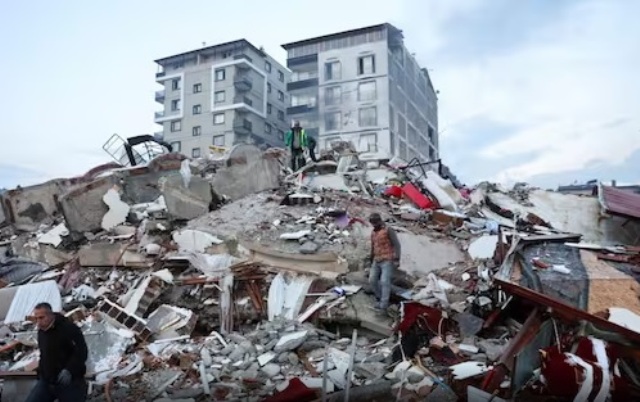Quake Rubbles Disposal A Major Challenge For Turkey
Antakya, Turkey: After the deadliest earthquake in its modern history, Turkey faces the daunting task of disposing of hundreds of millions of tonnes of rubble, some of it potentially harmful.
The Feb. 6 earthquake and aftershocks left at least 156,000 buildings either completely collapsed or damaged to the point where they require demolition, Turkish authorities said, with whole areas of cities reduced to shattered concrete and steel.
The U.N. Development Program (UNDP) says the resulting 116- 210 million tonnes of rubble are equivalent to an area of 100 square km (40 square miles), if it were stacked to a height of 1 metre. That is roughly the size of Barcelona.
Turkish President Tayyip Erdogan, facing an election likely to be held on May 14, has pledged to rebuild homes within a year, although experts warned safety should come before speed.
An official said tenders and contracts had already been completed for some projects and safety would not be compromised.
In many cities, rescue teams have been replaced by thousands of trucks and excavators that claw away at the mountains of concrete. Workers in the city of Antakya, in Hatay province said it can take several days to clear the debris of one building.
“The scope of the challenge is almost beyond comprehension,” UNDP Resident Representative Louisa Vinton said in a statement. The UNDP said the disaster generated at least 10 times as much rubble as the last big Turkish earthquake in 1999.
Much of the rubble that has so far been removed has been stored in nearby temporary dumps, raising concerns about contamination. There are fears that older building material may contain asbestos, a cancer-causing fibre banned in many countries, including in Turkey, several experts told Reuters.


Comments are closed.